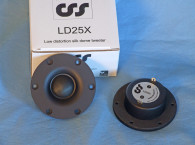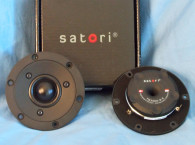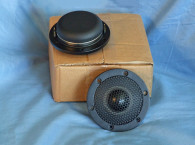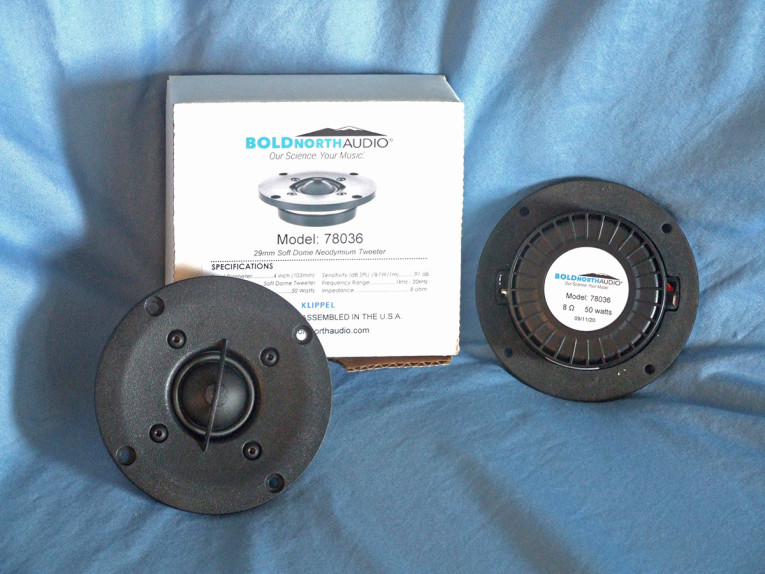

The device characterized here is another new model from the MISCO Bold North Audio product line, the BDT-2901 dome tweeter. This new Bold North tweeter uses a moderately wide 3mm surround suspending the 29mm Dr. Kurt Mueller (DKM) silk dome, as seen in Photo 1 and in the cutaway drawing in Figure 1. Features include a neodymium ring magnet motor structure, a T-pole with a copper shorting ring (Faraday shield) combined with a tapered front plate, damped center core leading to a damped injection molded rear cavity, an injection-molded faceplate with integrated phase correction device, an aluminum former wound with copper-clad aluminum wire (CCAW), and a foam mounting gasket.
For acoustic isolation, the faceplate uses a damping layer of adhesive between it and the front plate. Note that the blue cylinder shown in the Figure 1 cutaway is a two-part damping core with an outside felt “container” with the center filled with a high-density Dacron material. This means there is no pole piece behind the dome to create secondary reflections back into the dome, which is the aspect of high-end tweeters (e.g., the Scan-Speak AirCirc and the SEAS Millennium) that gives them the clarity and detail that is definitely improved over tweeters that utilize pole piece motor construction. I should also mention that the device does not use magnetic fluid in the cap, which for a high-end tweeter like this is optimal.
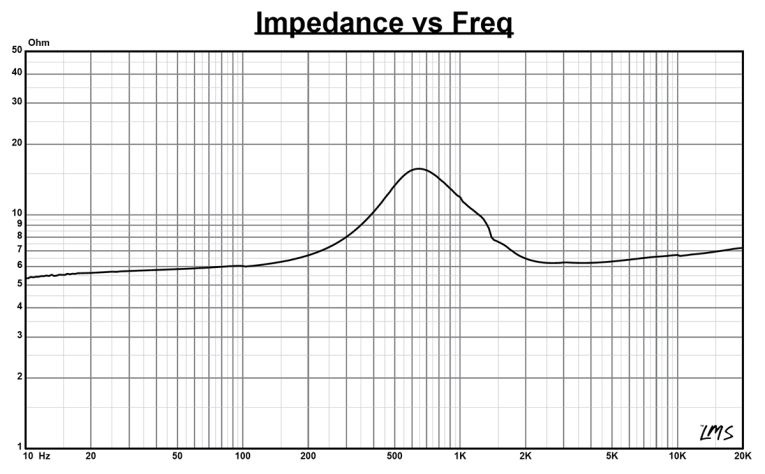


I commenced testing using the LinearX LMS analyzer to produce the 300-point impedance sweep shown in Figure 2. The tweeter resonance occurs at a moderately low 641Hz. With a 5.7Ω DCR (Re), the minimum impedance for this tweeter is 6.2Ω at 2.64 kHz. Following the impedance test, I recess mounted the BDT-2901 in an enclosure with a baffle area of 15”×7” and measured the on- and off-axis frequency response, again using the LoudSoft FINE R+D analyzer (provided by LoudSoft) and the GRAS 46BE 1/4” microphone (courtesy of GRAS Sound & Vibration), I set them up to measure from 200Hz to 40 kHz (using a 192kHz sampling rate) at 2V/0.5m, normalized to 2.83V/1m. Sweeps were performed at 0°, 15°, 30° and 45°. Figure 3 shows the on-axis response of the BDT-2901, which measured ±4dB from 710Hz to 17kHz, followed by a 4dB rise between 20kHz to 30kHz.
Figure 4 gives the on- and off-axis response of the BDT-2901, with the off-axis curves normalized to the on-axis response in Figure 5. Figure 6 shows the CLIO 180° polar plot (measured in 10° increments with 1/3 octave smoothing). Figure 7 shows the two-sample SPL comparison of the BDT-2901, indicating the two samples were closely matched to within 0.75dB throughout its operating range to 18kHz.
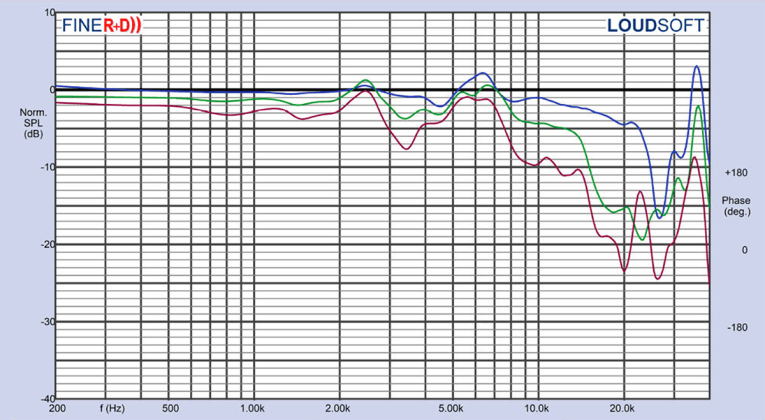


For the final group of tests, I fired up the Listen, Inc. SoundCheck analyzer along with the Listen SCM 2 1/4” microphone (provided courtesy of Listen, Inc.) and measured the impulse response with the tweeter recess mounted on the same 15”×7” test baffle. Importing this data into Listen’s SoundMap software produced the cumulative spectral decay (CSD) waterfall plot shown in Figure 8. Figure 9 provides the Short Time Fourier Transform (STFT) displayed as a surface plot.
For the last SoundCheck test procedure, I set the 1m SPL to 94dB (3.58V) using a noise stimulus, and measured the second and third harmonic distortion at 10cm (Figure 10).
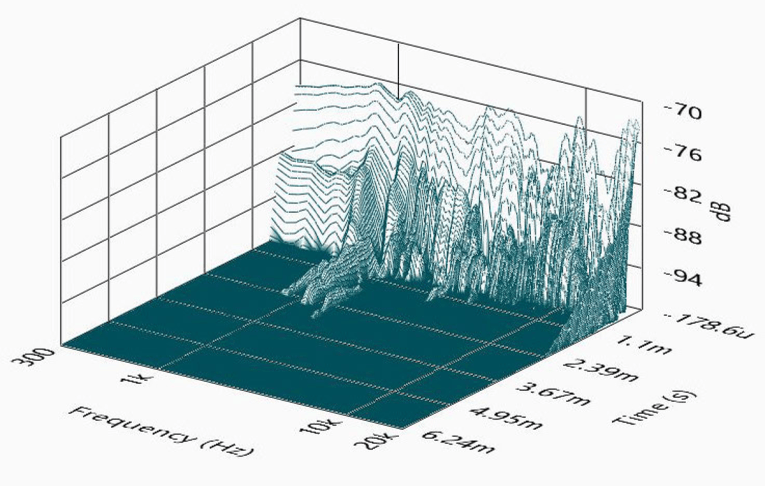


The build quality of the Bold North Audio line is definitely representative of the high-end two-channel OEM driver market. MISCO has been in the OEM loudspeaker business since 1949, and with the acquisition of Warkwyn, the company has as professional an engineering staff as any OEM in the industry. And, the Bold North Audio BDT-2901 tweeter is a good example of that engineering integrity, and is a great first high-frequency offering for MISCO. For more information, visit www.miscospeakers.com/product-lines/bold-north-audio. VC
This article was originally published in Voice Coil, December 2020.





